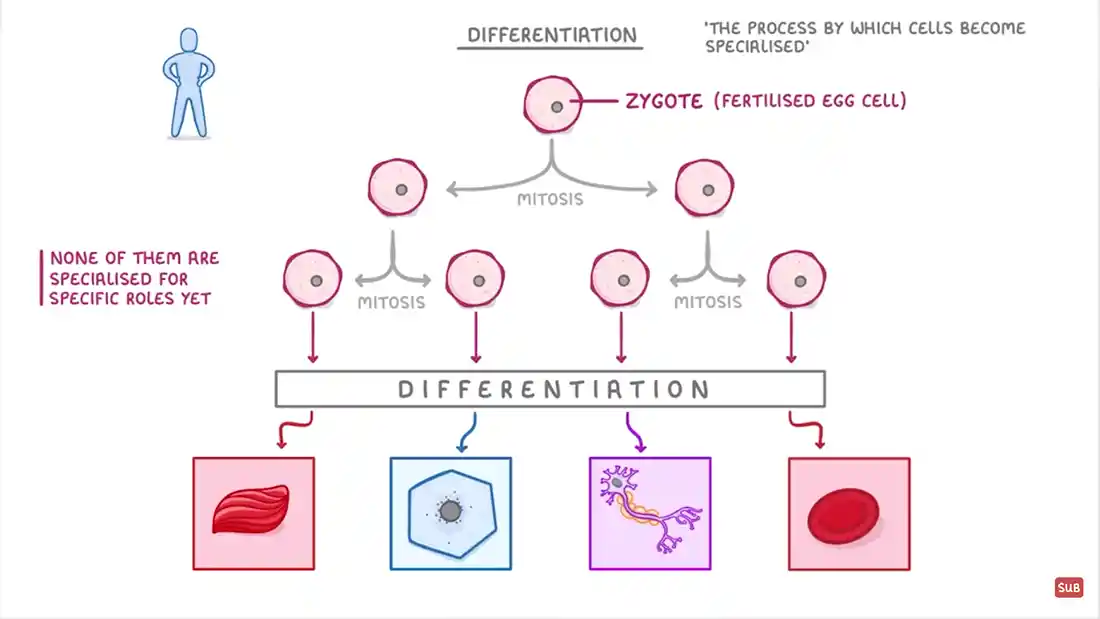

Stem cell, no function, differentiation, clone, medical breakthrough, variation, totipotent, multipotent, pluripotent, unipotent, embryonic, umbilical, adult stem, bone marrow.
We know that our body has different types of cells - blood cells, nerve cells, brain cells, muscle cells, skin cells - but how are they made, and what makes them?
A stem cell is a cell that is in your body that has no function. When your body needs extra cells (let's say you've cut yourself), the stem cells can be differentiated to suit this need. Your body will create new blood cells as a result of you losing some when you've cut yourself.
Stem cells have the ability to renew themselves. They are categorised into their different types:
Adult stem cells are not able to differentiate into every cell type we have in our bodies. They are limited to cells such as red blood cells, white blood cells, platelets and skin and tissue cells.
The following still is from a video on stem cells, with the following details:
Please click on the image to view the video.

Stem cells, whether embryonic or adult, will self-renew and create either more stem cells or the more differentiated cell types required for a process or reason.
Stem cells have the unique ability to recreate functional tissues. Because they (specifically pluripotent cells) are without a function, they can be differentiated into the tissues reuquired by the body. This is different to the adult stem cells, which are only differentiated into the types of cells that are within those organs (for example, in the heart, stem cells could become red or white blood cells).

There are several ways you can harvest stem cells: from your blood, from embryos, from bone marrow and also from your umbilical cord when you are born!
Through cell culture (a method of creating new stem cells in a laboratory), stem cells are placed on culture dishes in order to create new cells. When the dishes become overcrowded, they are replaced with a new dish to continue the process. This takes weeks or months to do.
But what are they used for?
Well, the stem cells that are ready to be used can be stimulated to create new types of cells - blood, tissues, etc. This is done by changing the environment in which they are sat in. It can be done by changing the chemical makeup of the culture dish to make them differentiate into a certain type of cell.
Uses of the stem cells include:
The following still is from a video on differentiation, with the following details:
Please click on the image to view the video.

While stem cell research continues, there are certain aspects where it could be deemed a social or ethical issue. This includes where the cells are obtained from. Theoretically, stem cells could be obtained from people who have an abortion, which others may see as being unethical due to it being a baby (depending on the amount of time of the pregnancy).
Another issue is that stem cells from animals could be used. Not only is this an ethical issue in terms of the animal and it's own rights, but also using animal stem cells to interact with humans could also be an ethical issue.
While there are many benefits to using stem cells, and research is continuing to try and create new medications or further research on diseases, this is a subject that continues to carry some controversies with it.
If you are unable to see the board, please click here.
Disclaimer | About Me | Sitemap
Website design by SyntaxHTML.



Blue icons adapted from icons courtesy of Smashicons.com